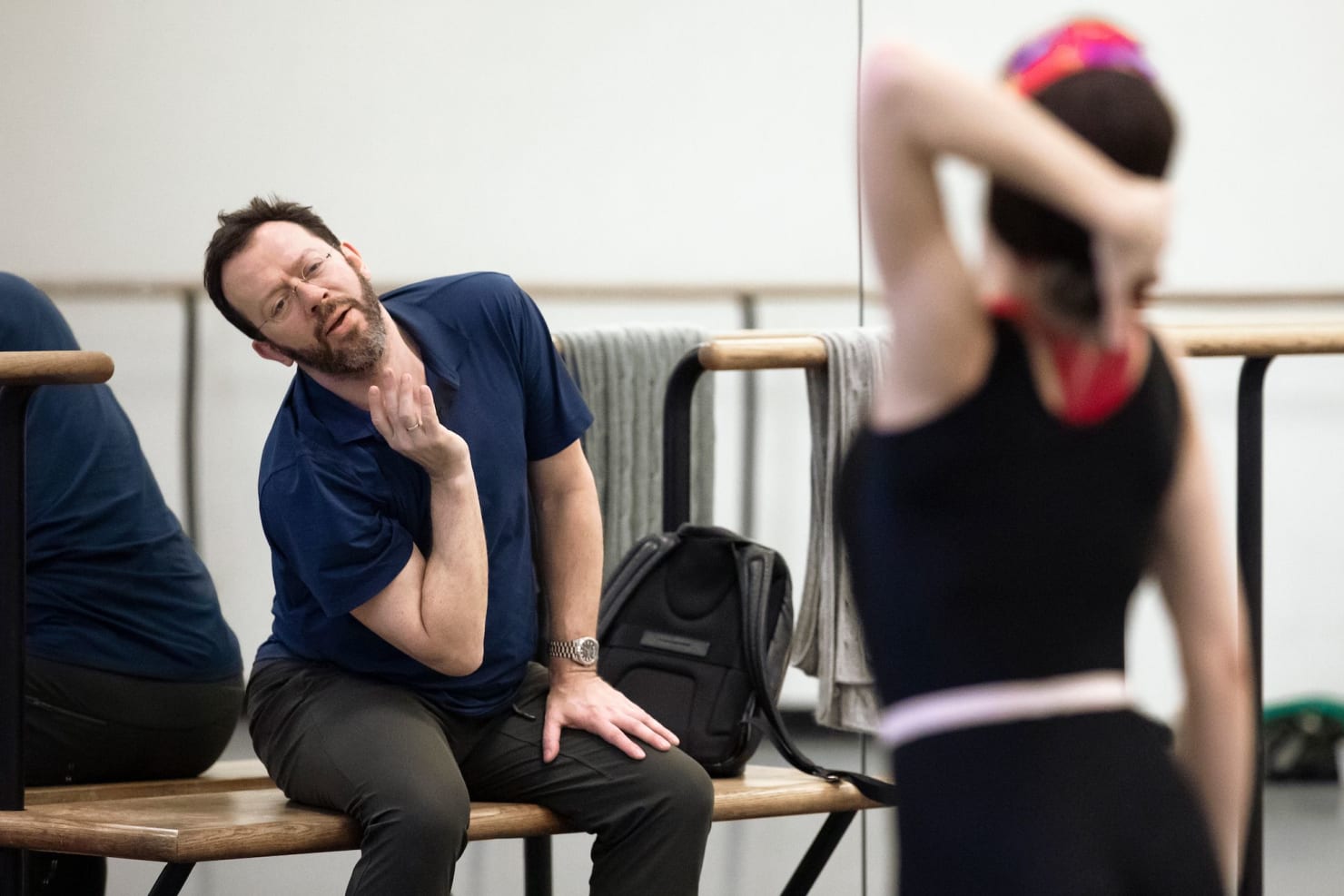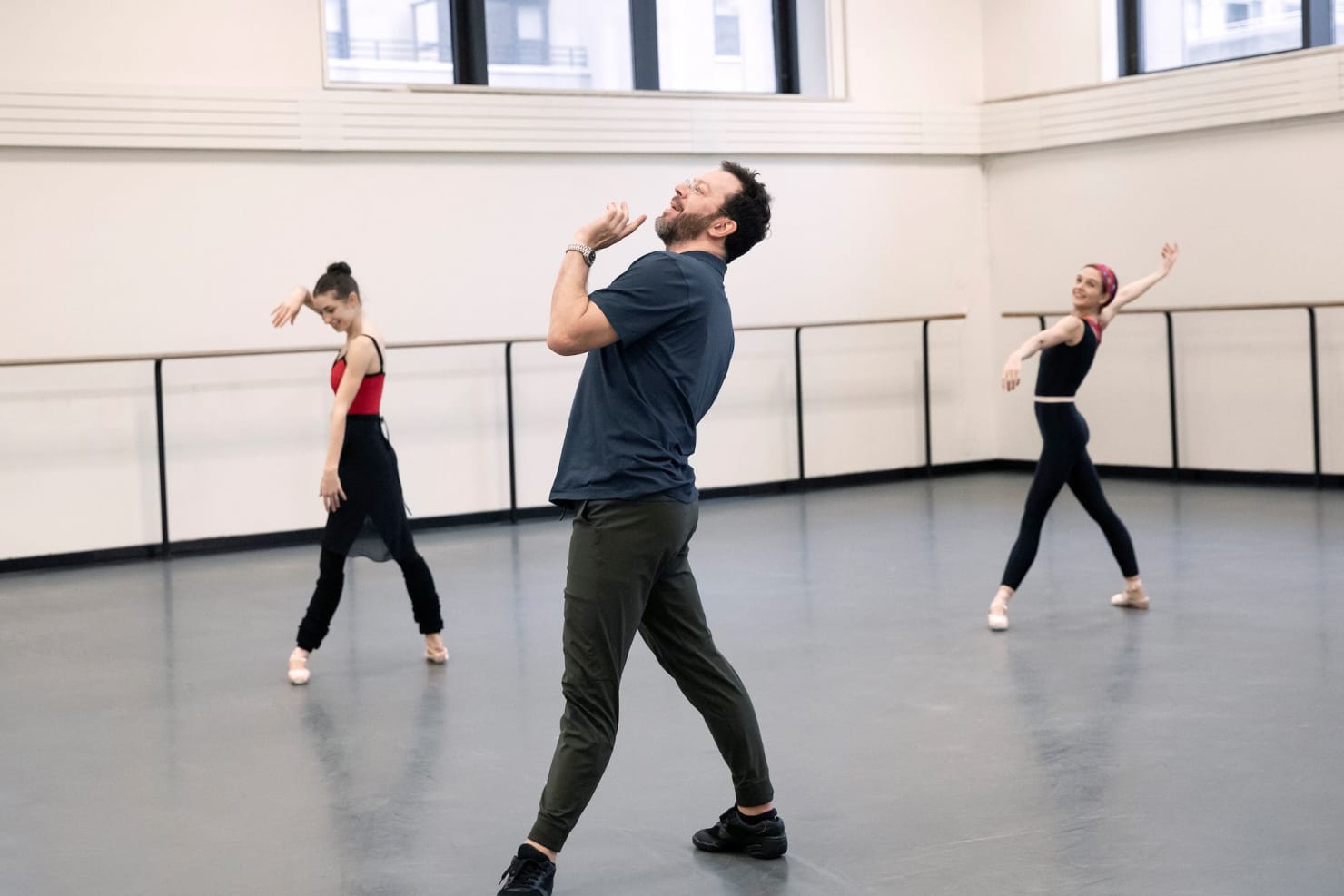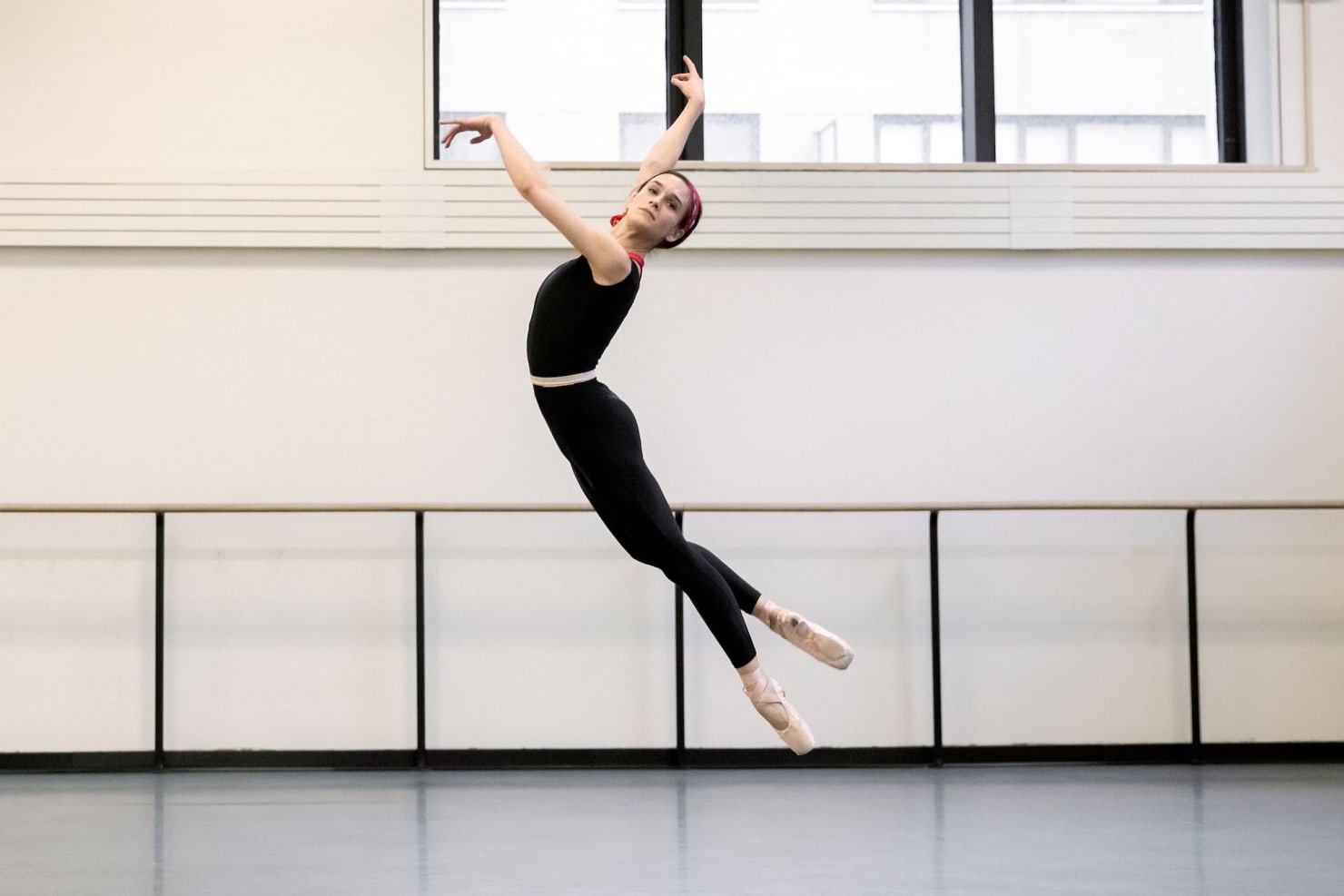
Voices and Piano
NYCB Piano Soloist Stephen Gosling on the unique and challenging score to Voices
, January 21, 2020
This winter, choreographer Alexei Ratmansky is back at NYCB for the world premiere of his newest work, Voices. The ballet is set to a selection of excerpts from contemporary composer Peter Ablinger’s Voices and Piano; the piece is a collection of recorded speech from international luminaries like Nina Simone, Jean-Paul Sartre, and Mother Theresa, accompanied by a solo piano, usually reflecting the rhythm and pitch of the speaker’s voice throughout.
For performances of Voices and Piano, the pianist plays live along with the recordings; the score is provided via standard piano notation, the recording itself, and an accompanying “click track” that the pianist listens to via earpiece, helping them to keep tempo and match up with the speech. An unusual arrangement, to say the least! To learn more about it and the preparatory work involved, we spoke with solo pianist Stephen Gosling, who will be performing the Ablinger score during all performances of Ratmansky’s latest ballet.
You’ve been a solo pianist with the NYCB Orchestra for 3 years now; how did you come to work for the Ballet, and, in particular, to perform the Ablinger score for Voices?
I studied at Juilliard for a long time, I was there for about a decade and I squeezed three degrees out of them. I was always very interested in new music; I played in a ton of different new music groups, which is probably why I was assigned this particular piece — it’s a world that I’m familiar with. Once I left Juilliard, pretty much all I did was freelance, which has many pros and cons. This opportunity [at NYCB] came at a good time because I was really getting fed up over the cons [of freelance work].
NYCB is ramping up for winter performances, which open this week. How are you finding preparations?
At the moment, I’m busier even than normal because — and I suppose this is relatively unusual — I’m playing in two works in the same program: there’s the new Ratmansky and then there’s Polyphonia. So, consequently my days are even heavier than I’m used to. On top of that, like everyone else, I have Swan Lake rehearsals. And I have quite a few Stravinsky Violin Concerto rehearsals as well, so it’s a mixed bag — but the focus is still mostly on the Ratmansky.
I’d only ever played one piece of [Ablinger’s] before, which was completely different. These pieces are part of an ongoing cycle, he’s written, I think, over 50 of them; [they are] pieces for solo piano with recorded voice samples, always of some notable figure — be it in the arts, or in civil rights, or politics, or whatever. [Ablinger] actually said he doesn’t want anyone to ever play all of them in one go, he said you’re supposed to just pick a few that you like, and so that’s what Alexei has done.
For a number of logistical reasons, when Alexei started putting the ballet together, it was easier to just go with the recordings than deal with all the hardware issues of playing along with the click [track] and all that, so for the first couple of weeks I was just sort of operating the recordings, pressing play on iTunes and trying to find the right spot. So, I have [been involved since the beginning], but without actually playing piano in the studios — I was just practicing it on my own time. The first time I actually played it in the studio was a few days ago. It was an interesting trial by fire because we actually did a complete run, put it all out there, everything. But it was good for me to do, to find out what some of the problem spots might be.
Voices and Piano is an unusual work, quite unlike the majority of orchestrations an audience is likely to hear at the Ballet. Can you tell us more about the piece itself and the particular challenges it poses?
Basically, the publisher sends you these recordings, and there’s the recorded voice samples in one channel and then there’s a click track for the pianist to just keep in tempo in the other. So, I’ve got [the click track] in my left ear, and then I’m just playing this immensely complicated music over it. Some of the choices [Ablinger] makes for pitches are quite unusual; that’s just because he’s basing the pitch content on the natural pitch contours of the spoken voice samples, which makes for some very interesting combinations of notes, and some unusual fingerings that you sometimes have to come up with to get around them. But I’ve always enjoyed those kinds of challenges.
What is it like working in the studio with Alexei Ratmansky and the dancers?
[Ratmansky’s] great. He’s very pleasant to work with and he’s just really fascinating to watch. You can almost hear him thinking. He comes in with all these ideas... And then, quite often, we’re about to take it from a certain place, I’m just about to start playing and to press play, and another idea suddenly occurs to him. He’s got this very fertile mind, and he’s very much in his element doing this — he’s confident without there being a trace of ego about it. It’s just a very natural, pure process that you’re watching.
In terms of my experience of playing Voices and Piano, I’ve played pieces with click track before, but I’m not sure I’ve ever played anything quite this complicated with a click track. It’s not that the click makes it harder; in some ways it makes playing with dancers easier because there isn’t the pressure of having to find the right tempo — that element’s already taken care of. But in terms of being sometimes a little overwhelmed by the sensory input — you know, here’s the click, and then here’s this mad music, now look at what those dancers are doing over there — it’s just a question of staying mentally on top of it.
You mentioned that you’re playing the piano for the performance of Christopher Wheeldon’s Polyphonia as well, which is scored to a selection of excerpts from music by the avant-garde composer György Ligeti.
Polyphonia I did a few times last year or the year before that, so that’s familiar territory — but the first movement of that, which is this etude called Désordre [from the 1985 Ligeti work Études pour piano, premier livre], that’s always a huge challenge. In that piece you’re sort of physically and mentally exhausted within about five seconds, and then you’ve got to play for another couple of minutes. I think I’ve never experienced as skewed a ratio of hours put in versus how long the piece actually is in terms of minutes. It’s pretty short and based on kind of a simple concept, but the two hands begin in rhythmic sync, and then all of a sudden, one of the hands is one eighth-note off, plus one hand’s only ever playing white keys and the other’s only playing black keys, and then the accented notes are octaves or chords and then everything else is single notes.... As I said, it’s physically and mentally exhausting and I just had to drill and drill and drill [to prepare]. So, most of the labor for that I did the first time around, but playing that and playing the new Ratmansky in the same program is going to be an interesting challenge.
Ratmansky has said that his preparation for choreographing Voices involved listening to the Ablinger selections over and over again; as you gear up for the performances and have likely become quite familiar with the music yourself, what have you discovered about it?
On top of the piano part being based on the pitch content of the recorded voices, I think that there’s also in most, if not all cases, some kind of a nod to the person’s line of work. Like, Bonnie Barnett is a jazz musician and DJ, and a lot of that piano part sounds kind of like a bass walk. Nina Simone’s movement is another kind of fractured stride piano, with the left hand leaping around a lot. The Agnes Martin movement — I didn’t actually know who Agnes Martin was and I had to look her up. There’s a line in that recording, “People say I’m a minimalist, but actually I think I’m an abstract expressionist,” which is interesting. I did a Google image search and you can see why some people might call her a minimalist [artist]; there are all these designs which seem very symmetrical and uniform but then if you zoom in, there’s this world of detail. In that piano movement, it’s basically just a bunch of chords, some very unusual chords, and sometimes different notes are louder than other notes, and they sort of sound like they’re all evenly spaced, but in fact they usually are not. It’s this sort of impression of a kind of uniformity, but it’s actually an illusion. So, I thought that might be some kind of nod to her artistic style.
It’s exciting [to work on this piece] because it’s a really far out of left field choice of music, which is one of the reasons I’m so excited about it — I think it’s great that [Ratmansky]’s chosen it. Obviously, I’m biased because I come out of that discipline. But that’s one of the things I like about the job, actually — there’s really quite a wide range of music that they utilize here [at New York City Ballet].







